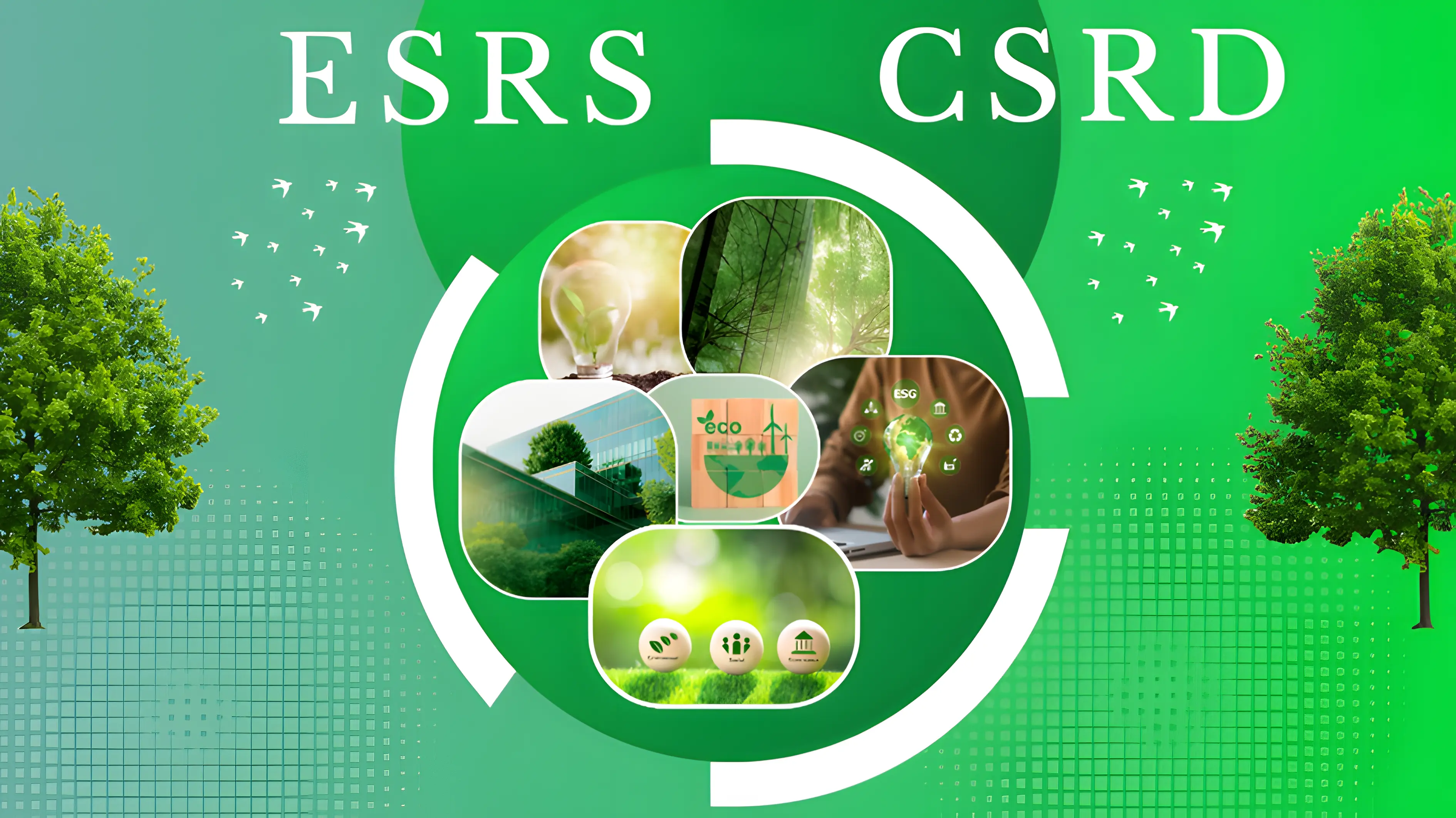ESRS and CSRD – European Sustainability Reporting Standards and CO₂ Emissions Reporting
12 September, 2025
In our latest article, we examine the changes that are fundamentally transforming how companies approach carbon footprint and sustainability reporting. You will learn what ESRS (European Sustainability Reporting Standards) and CSRD (Corporate Sustainability Reporting Directive) are, what new obligations they impose on enterprises, and how to practically prepare for the upcoming requirements. This is an essential reading for anyone looking to understand the regulations, avoid compliance pitfalls, and leverage them as an opportunity for growth and improved ESG data management.

- Introduction
- What is CSRD and Its Significance for Companies
- ESRS – New ESG Reporting Standards
- Greenhouse Gas Emissions in ESG Reporting
- Energy and Scope 2 Emissions – Growing Role in Reporting
- Power Purchase Agreements (PPA) – Practical Tool for CO₂ Reduction
- How PPAs Impact ESRS Reporting
- NEOGAGE Carbon Footprint as Support
- Practical Guide – Preparing a Company
- Conclusion
Introduction
From 2024, sustainability and carbon footprint reporting are no longer the exclusive domain of global corporations. The implementation of the CSRD (Corporate Sustainability Reporting Directive) and the development of detailed ESRS (European Sustainability Reporting Standards) require thousands of companies across the European Union to report CO₂ emissions in a precise, reliable, and auditable manner. This is a revolution in reporting practices – ESG data is becoming as important as financial statements.
What is CSRD and Its Significance for Companies
Scope of the CSRD Directive
- From 2025 – large companies already reporting under NFRD.
- From 2026 – all large enterprises meeting two of three criteria: >250 employees, >€40 million in revenue, >€20 million in assets.
- From 2027 – listed SMEs.
- Eventually – non-EU companies with significant operations in Europe.
Double Materiality
Companies must report not only the impact of external factors on their business (financial materiality) but also their impact on the environment and society (impact materiality). This new paradigm requires a holistic view of business operations.
Sanctions and Risks
Non-compliance with CSRD entails:
- Financial penalties,
- Loss of credibility with investors,
- Exclusion from supply chains of companies that must report ESG themselves.
ESRS – New ESG Reporting Standards
Scope and Structure of ESRS
The 12 ESRS standards include:
- ESRS 1–2 – general requirements,
- ESRS E1–E5 – environmental topics,
- ESRS S1–S4 – social topics,
- ESRS G1 – corporate governance.
The Role of EFRAG
Standards are developed by EFRAG (European Financial Reporting Advisory Group), ensuring alignment with EU climate policy.
CO₂ Reporting Requirements
The key standard is ESRS E1 – Climate Change, which requires reporting:
- GHG emissions broken down by Scope 1, 2, and 3,
- Reduction targets and transformation plans,
- Decarbonization actions and their results.
Key Metrics
Companies must report:
- Total GHG emissions (t CO₂e),
- Emission intensity (e.g., t CO₂e/revenue),
- Energy emission factors,
- Progress against climate targets.
Greenhouse Gas Emissions in ESG Reporting
Division of Emissions
- Scope 1 – direct emissions (e.g., fuel combustion).
- Scope 2 – emissions from electricity and heat.
- Scope 3 – indirect emissions across the value chain.
Major Challenges
Scope 3 is often the most complex – it requires data from suppliers and customers, and in many industries accounts for 80–90% of total emissions.
Energy and Scope 2 Emissions – Growing Role in Reporting
Energy-Related Emissions
Emission levels depend on the country’s energy mix.
Scope 2 Reporting Methods
- Location-based – emissions calculated using the average national energy mix.
- Market-based – emissions calculated based on the actual energy source (e.g., via PPA, Guarantees of Origin).
European Energy Mix
Although renewable energy share is growing, fossil fuels still play a significant role. Companies must actively reduce their energy carbon footprint.
Power Purchase Agreements (PPA) – Practical Tool for CO₂ Reduction
Definition and Types
- On-site – renewable installations at the company site.
- Off-site – energy delivered via the grid.
- VPPA (Virtual PPA) – financial contracts settled based on energy prices.
Benefits
- Reduction of Scope 2 emissions,
- Stabilization of energy costs,
- Increased credibility of ESG reporting,
- Strengthening corporate reputation.
Challenges
- Lengthy negotiations,
- 10–15 year contracts,
- Regulatory risks.
How PPAs Impact ESRS Reporting
Scope 2 and PPA
PPAs enable market-based reporting, which can significantly reduce a company’s carbon footprint.
Guarantees of Origin
ESRS requires proof that energy originates from renewables, e.g., via Guarantees of Origin (GO) certificates.
Examples of EU Companies
- IKEA – investments in wind farms,
- BMW – PPA contracts in Germany,
- BASF – long-term wind energy agreements.
NEOGAGE Carbon Footprint as Support
Automation of Data Collection
The system integrates internal and external data sources.
Analysis and Reduction Scenarios
Enables simulation of the impact of PPAs or transition to renewable energy.
Integration with ESRS and CSRD
Generates reports compliant with EU requirements and ready for audit.
Practical Guide – Preparing a Company
- Emissions Audit – identify sources and collect data.
- Decarbonization Strategy – set targets and select tools (renewables, PPAs).
- Data Integration – implement digital tools (NEOGAGE Carbon Footprint).
- Reporting – prepare ESRS-compliant report.
Conclusion
CSRD and ESRS are transforming ESG reporting in Europe. CO₂ emissions, particularly Scope 2, are becoming a central focus. Companies that promptly implement decarbonization strategies and tools for automated calculations will not only comply with regulations but also gain a competitive advantage, better access to financing and improved position in supply chains.
NEOGAGE Carbon Footprint supports businesses throughout this process – from calculations and reduction analysis to ESRS and CSRD-compliant reporting.